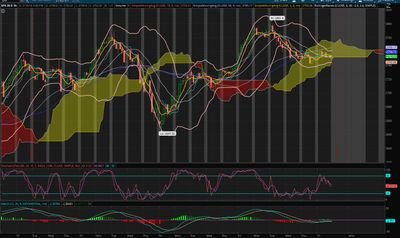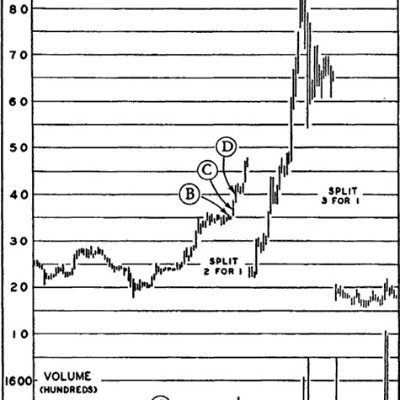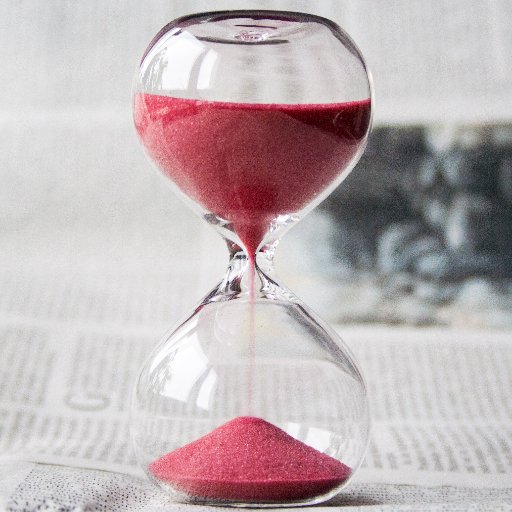YTD WIn Rate 24.8%, (Lowest in my 15 years) YTD Performance: +49% realized (+54.5% unrealized) Over a month ago, I posted a poll asking whether, with a win rate below 40%, it would be more effective and lead to greater improvement to focus on adjusting your winning trades or your losing trades. The results leaned toward losing trades, and I agree—if you've accepted that your strategy has a win rate under 40%, the priority should be addressing your losing trades. I have one of my lowest annual (YTD) win rate % in my 15 years but I definitely felt I have improved so much more significantly. You can't control the outcome, but you can control your sizing, your risk, your loss. If you're struggling to gain traction in your trading, I recommend building an RRR (Risk-Reward Ratio) histogram graph on per trade basis. This will help you analyze how well your losses are controlled from a broader perspective, rather than focusing on the disappointment of your equity curve which does not present you any perspective to improve. Total Trades: 371 (Max Month: 64, Min Month: 29) Trade Type: 64% ETF (Leveraged, Non-leveraged & Inverse), 36% Equities (Mostly long including inverse mega $GGLS and $TSLQ, less than 4 parabolic short) Win Rate: 24.8% (Max Month: 31.6%, Min Month: 14.5%) Avg R Gain: 3.7 (Max Month: 6.4, Min Month: 1.4) Avg R Loss: 0.78 (Max Month: 0.89, Min Month: 0.69) Avg R Gain/Loss: 4.7 (Max Month: 7.26, Min Month: 1.61) Consecutive Winning Months: 4 (May to August) Consecutive Losing Months: 2 (Mar to Apr) Biggest Winning Month: February (+18.8%, Win Rate: 25%) Biggest Losing Month: (-7.6%, Win Rate: 14.5%) Biggest Winner: 7th February $GBTC 53R. (I attempted 26/1 and 7/2 on full losses) Biggest Loser: $GLD -3.92R (executed 6/6, gap down open 7/6) Avg Holding Days (Winners): 15 Days (Max Month: 22.4, Min Month: 9.6) Avg Holding Days (Losers): 2 Days (Max Month: 4.3, Min Month: 1.2) Longest Consecutive Losing Trades: 17 8th March to 15th March (Min Month: 5) Longest Consecutive Winning Trades: 4 A few key takeaways I hope you can learn from. 1. Trading is not easy because you are on drawdown and facing consecutive losing streaks most of the time. You face bad days more than good days, this is a fact and you need to accept it. My longest consecutive losing streak of 17 in 6 trading days is not easy to stomach for someone without risk management and emotional control. 2. Don’t fixate on the performance of your last 10 trades, the performance this week or this month —focus on the performance of your last 500 trades. Embrace the big picture, the law of large numbers, and a long-term perspective in trading. 3. Be highly selective to reduce subpar trade frequency and improve the quality of both trade selection and execution. At times I favor high ADR% stock not because they move fast, but because they may give you the tightest entry based on LoD to ATR and it could just explode to 5-6R winner in a single day when it trades to its mean ADR%, its implied volatility. It's about quality of entry opportunity much more than selection quality alot of times. 4. I won’t be a profitable trader without RVOL-based entries. This year there's alot of false breakout, false gap up movers. I have big winners in $KOSS and $MGOL because they open as much as +1000% Rvol and trades to +4500% in under 15mins. Volume are strong clues for trading breakouts in equities and intraday follow through. 5. High-quality entries is way more important than stock selection imho. I can bet you not many swing traders can profit from high quality IPO names trading at ATH $CAVA $BTSG $NU until you can get a quality entry eg. $CAVA 9th August high rvol below 60% LoD. 5. Learn to size down losses before your trade hit the eventual stops. I spoke alot about selling partial in sequential manner of 33% size out from 33% below entry, and further 33% size out from 33% to stop loss. I can control my average losses within 0.8R because of this even with slippages and spread. This is a metrics anyone can improve and I largely focus to improve on. 6. Learn to hold trades if it is working. I am still holding $XLU and $SCHH with 70 days calendar days holding period. Non-leveraged ETFs may be slow on ADR% perspective, but they present the best trend to 10/20-MA without overshoots as much as equities. This 2 are +25R trades. 7. Don't kick yourself for missing major trade of the year that are being hyped up on social media eg. $SMCI or $ASTS. I did not even capture that. Trading becomes challenging if you let daily price action affect you emotionally. However, it becomes more manageable and straightforward when you focus on the bigger picture, address your weaknesses and learn to improve them on MoM basis. You need to give yourself time and avoid the mentality that you can rush towards success.
YTD WIn Rate 24.8%, (Lowest in my 15 years) YTD Performance: +49% realized (+54.5% unrealized) Over a month ago, I posted a poll asking whether, with a win rate below 40%, it would be more effective and lead to greater improvement to focus on adjusting your winning trades or your losing trades. The results leaned toward losing trades, and I agree—if you've accepted that your strategy has a win rate under 40%, the priority should be addressing your losing trades. I have one of my lowest annual (YTD) win rate % in my 15 years but I definitely felt I have improved so much more significantly. You can't control the outcome, but you can control your sizing, your risk, your loss. If you're struggling to gain traction in your trading, I recommend building an RRR (Risk-Reward Ratio) histogram graph on per trade basis. This will help you analyze how well your losses are controlled from a broader perspective, rather than focusing on the disappointment of your equity curve which does not present you any perspective to improve. Total Trades: 371 (Max Month: 64, Min Month: 29) Trade Type: 64% ETF (Leveraged, Non-leveraged & Inverse), 36% Equities (Mostly long including inverse mega $GGLS and $TSLQ, less than 4 parabolic short) Win Rate: 24.8% (Max Month: 31.6%, Min Month: 14.5%) Avg R Gain: 3.7 (Max Month: 6.4, Min Month: 1.4) Avg R Loss: 0.78 (Max Month: 0.89, Min Month: 0.69) Avg R Gain/Loss: 4.7 (Max Month: 7.26, Min Month: 1.61) Consecutive Winning Months: 4 (May to August) Consecutive Losing Months: 2 (Mar to Apr) Biggest Winning Month: February (+18.8%, Win Rate: 25%) Biggest Losing Month: (-7.6%, Win Rate: 14.5%) Biggest Winner: 7th February $GBTC 53R. (I attempted 26/1 and 7/2 on full losses) Biggest Loser: $GLD -3.92R (executed 6/6, gap down open 7/6) Avg Holding Days (Winners): 15 Days (Max Month: 22.4, Min Month: 9.6) Avg Holding Days (Losers): 2 Days (Max Month: 4.3, Min Month: 1.2) Longest Consecutive Losing Trades: 17 8th March to 15th March (Min Month: 5) Longest Consecutive Winning Trades: 4 A few key takeaways I hope you can learn from. 1. Trading is not easy because you are on drawdown and facing consecutive losing streaks most of the time. You face bad days more than good days, this is a fact and you need to accept it. My longest consecutive losing streak of 17 in 6 trading days is not easy to stomach for someone without risk management and emotional control. 2. Don’t fixate on the performance of your last 10 trades, the performance this week or this month —focus on the performance of your last 500 trades. Embrace the big picture, the law of large numbers, and a long-term perspective in trading. 3. Be highly selective to reduce subpar trade frequency and improve the quality of both trade selection and execution. At times I favor high ADR% stock not because they move fast, but because they may give you the tightest entry based on LoD to ATR and it could just explode to 5-6R winner in a single day when it trades to its mean ADR%, its implied volatility. It's about quality of entry opportunity much more than selection quality alot of times. 4. I won’t be a profitable trader without RVOL-based entries. This year there's alot of false breakout, false gap up movers. I have big winners in $KOSS and $MGOL because they open as much as +1000% Rvol and trades to +4500% in under 15mins. Volume are strong clues for trading breakouts in equities and intraday follow through. 5. High-quality entries is way more important than stock selection imho. I can bet you not many swing traders can profit from high quality IPO names trading at ATH $CAVA $BTSG $NU until you can get a quality entry eg. $CAVA 9th August high rvol below 60% LoD. 5. Learn to size down losses before your trade hit the eventual stops. I spoke alot about selling partial in sequential manner of 33% size out from 33% below entry, and further 33% size out from 33% to stop loss. I can control my average losses within 0.8R because of this even with slippages and spread. This is a metrics anyone can improve and I largely focus to improve on. 6. Learn to hold trades if it is working. I am still holding $XLU and $SCHH with 70 days calendar days holding period. Non-leveraged ETFs may be slow on ADR% perspective, but they present the best trend to 10/20-MA without overshoots as much as equities. This 2 are +25R trades. 7. Don't kick yourself for missing major trade of the year that are being hyped up on social media eg. $SMCI or $ASTS. I did not even capture that. Trading becomes challenging if you let daily price action affect you emotionally. However, it becomes more manageable and straightforward when you focus on the bigger picture, address your weaknesses and learn to improve them on MoM basis. You need to give yourself time and avoid the mentality that you can rush towards success.
@jfsrevg Jeff this is literally my life as well. 22% win rate last month, slightly different conclusions but mostly similar! We should chat about it because it's so uncommon I feel like. 🥲 The drawdown part hits hard lol.
@jfsrevg My average win rate this year has been 46.27% and R/R of 3. My lowest months also coincide with my worst-performing months. There's nothing more valuable than tracking your own trades.
@jfsrevg @plevchen Amazing. How do you determine R? (Fixed $ or %) and how do you compare apples to apples across periods where this might increase or decrease. Thanks!
@jfsrevg Pure gold @jfsrevg - congratulations, awesome performance! 🙌 Appreciate all the wisdom and love these long-form posts - nobody drops more knowledge bombs in their posts on X 💙
really enjoy reading your stuff Jeff. I tend to stay on the superficial level when it comes to trading momo/trend and keep it basic , mostly with fear of overfitting. but your posts remind me that might be there some optimizations that could make sense and boost overall profitability of the models.
@jfsrevg Ty What is average position size as % of portfolio. Or what is the range i.e. 6-9%, 8-12% etc? Thanks.
Jeff - Thank you for all of your content and posts! It took me nearly 3 years to believe what you wrote here: "Trading becomes challenging if you let daily price action affect you emotionally. However, it becomes more manageable and straightforward when you focus on the bigger picture, address your weaknesses and learn to improve them on MoM basis. You need to give yourself time and avoid the mentality that you can rush towards success."
@jfsrevg It couldn't be more transparent than this... congratulations Jeff... tomorrow I will also publish all my data... we need more transparency in this world... just one question... what percentage of portfolio risk corresponds to an "R"?
@jfsrevg Looks like you tightened your stops or ended trades too early? Could easily increase winrate by giving your trades more room, but then avg. loss would increase. In the end the only thing that counts is profit factor and you must be able to trade your system and stand the heat.
@jfsrevg Would you mind sharing the indicator you use for RVOL? I noticed you use tradingview, but most RVOL indicators I’ve tried on there have a bug where they only use data from the current session (bars that have developed while the session is open.)
@jfsrevg You can play with your probability, risk per trade in % terms and, nr of trades, RR and capital using Monte Carlo and see what dispersion you may get to prepare in advance for various scenarios. howtotrade.com/trading-tools/… Fail to prepare, you are preparing to fail.
@jfsrevg Great post. You will grow multi fold just by getting the blessings of fellow traders. These type of posts are very rare. These infuse lot of confidence and self belief. May you achieve all your goals. Keep up the great journey.
@jfsrevg Excellent post as always Jeff. Adjusting position sizing based on market environment/trade log outcomes and mastering loss taking process makes a huge difference on a large sample size
@jfsrevg Great read !! My trading went next level the day i incorporated r:r in my system
@jfsrevg @StarshipTrade i found out that lossrate is better indicating the performance because winrate naturally does not contain my break-even trades so even with 16% winrate and 40% break-even i can still be green























